The box rocks: 10 cars hip to be square
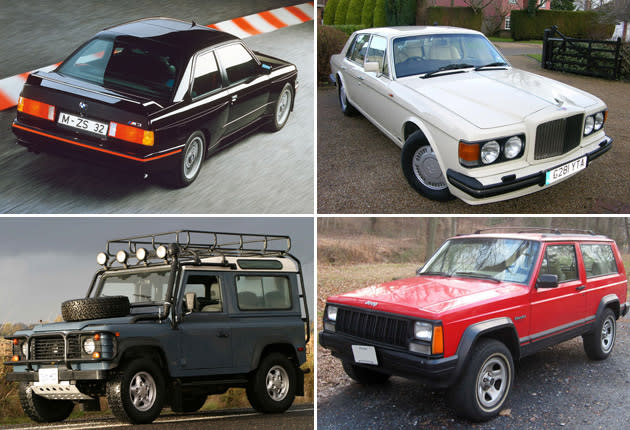
MORE AT POPULAR MECHANICS
Decades before the Scion xB or Nissan Cube were making boxy cars cool for the new millennium, the roads were packed to the guardrails with square-shouldered machines. Some cars were boxy for practical reasons. Others did it for style—it was hip to be square in the '70s and '80s.
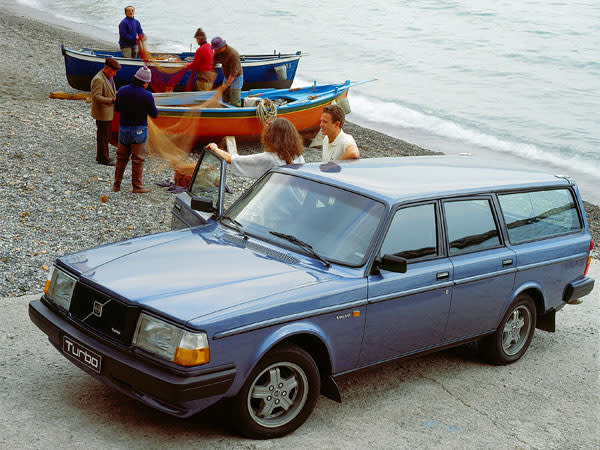
Volvo 240 (1975–1993)
If there was a car that defined boxy but beautiful, it would have to be the Volvo. These machines were so square that the later higher-powered versions became known as turbo bricks. These 240 turbo models were quick, hitting 60 mph in less than 8 seconds—not bad for 1985. But all 240s are known for exemplary reliability, safety, and roominess. The trunks are incredibly large for such a diminutive car, a fact that's especially true for the wagons, which could swallow 71 cubic feet of stuff with the rear seat down. Hey, right angles are perfect for fitting lots of gear. And don't forget: Volvo 240s were rated to tow 3300 pounds. A modern Jeep Wrangler needs a "tow package" to handle as much.

BMW M3 (1988–1991)
The E30 BMW, otherwise known as the generation of 3-Series that ran from 1984 to 1991 was an icon for the '80s and a design blueprint for other manufacturers. The E30's crisply cut lines became all the more alluring when BMW flared its fenders wide for use on the first M3. The E30 generation M3 was the company's first modern and (relatively) affordable ultra-performance machine.
The M3 produced nearly 200 hp from a nonturbocharged four-cylinder engine. That's impressive even today, but we're talking about the late 1980s, when Chevy's mighty 5.7-liter V-8-powered Corvette made just 240 hp. Beyond slaying more exotic machinery on public roads, the chiseled Bavarian's main purpose was to beat rival German sports sedans on the racetrack. (After all, the M is for Motorsport). BMW made just fewer than 5000 of these M3s, but they cemented the brand's identity as "the Ultimate Driving Machine."

Mercedes-Benz 500E (1991–1994)
The W124 series Mercedes-Benz E-Class (1984–1995) was the most angular, square-jawed, and attractive of the 1980s Bruno Sacco–designed Benzes. It was arguably one of the best built and most durable car platforms the company had ever produced, too. The most potent W124 came at the end of the run, in the early 1990s.
Today Mercedes has AMG as its in-house tuning shop building high-performance Benzes. But back in the early 1990s, AMG was just a rogue tuning shop. When Mercedes decided to build its first high-performance sedan to compete with BMW's M5, it chose Porsche. The 500E (known as the E500 for 1994) was largely hand-assembled and shuttled back and forth between the two automakers' factories in Germany. It packed a 322-hp V-8 pulled from the 500 SL and could crush 60 mph in just 5.5 seconds, making it one of the quickest sedans of the day.

Jeep Cherokee (1984–2001)
In the early 1980s, manufacturers realized they needed smaller and more fuel-efficient trucks to sell to young families. Jeep designed its new XJ Cherokee with lightweight unit-body construction (in which frame and body are one unit, like most cars), but retained its solid axle suspension for tremendous off-road capability. Better still, the Cherokee didn't wear smooth, rounded sheet metal like some small SUVs. This was a Jeep, after all, So XJs looked angular and tough.
The popular XJ was just as capable in the dirt as it was on a twisty slab of blacktop—the perfect blend of both sport and utility. The Cherokee was innovative, too, because while most competitors offered only two-door models, the XJ came with two or four doors. It was so beloved that Jeep kept the rig in production for 17 years.
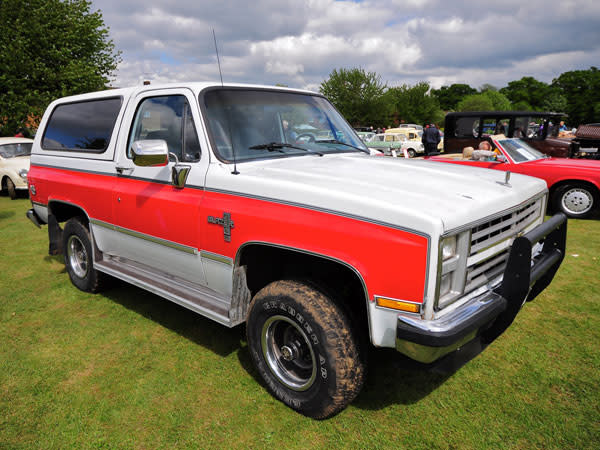
Chevy Blazer (1973–1991)
The original Chevy K5 Blazer of 1969–1972 had the curves of a muscle car. But the truck that replaced it in 1973 was just about as curvaceous as a cinder block. On late 1980s models, the front grille appears to be perfectly perpendicular to the ground. This truck is a cube with a corner chunk taken away for the windshield. In the case of the Blazer's even larger and more practical brother, the Suburban, the design is like a rectangle.
With the case of the Cherokee and the Blazer, it seems like the boxier a design is, the more timeless it becomes. The second-generation Blazer was a tough off-roader and proved so popular that it remained in production for a full 18 years. It even spawned a military M1009 version equipped with a diesel V-8. The boxy Blazers made an impact on three decades of truck design.
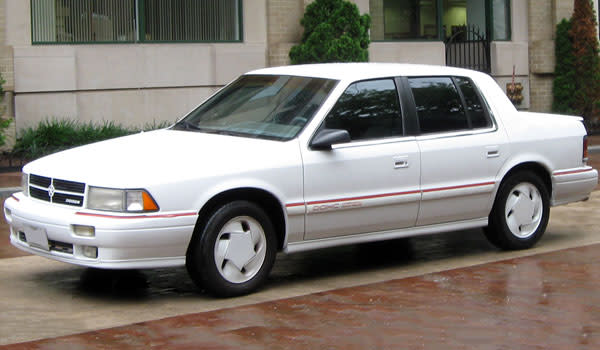
Dodge Spirit R/T (1991–1992)
In the mid-'80s and early 1990s, just about the entire Chrysler lineup was front drive and based on Chrysler's decade-old K-Platform. The Viper was about the only rear-drive performance car it created in this era. Yet the company managed to make some really fun turbocharged front drivers.
The high point came with this potent little box which lasted only two years. The Spirit R/T came packing the most muscular version of Chrysler's 2.2-liter turbocharged engines, which included 224 hp thanks in part to the Lotus-designed DOHC, 16-valve cylinder head. This sedan looked boring, but it was quick—close to Corvette-quick in its day. In a 1991 Car and Driver comparison test, the R/T laid down a blistering 0 to 60 time of 5.8 seconds; a 1991 Corvette LT1 automatic did it in 5.2.
The Spirit's trouble was that it didn't handle like a 'Vette; it was a little soft in the corners. But the Chrysler Corporation would not produce a quicker small sedan until the 2003 Dodge SRT-4, which used a larger version of that same engine.
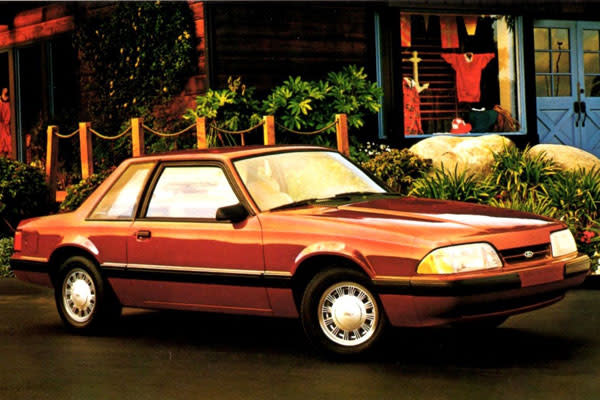
Ford Mustang LX 5.0 Notchback (1985–1993)
Unlike today's Mustang, which comes in just two body styles, the Mustangs built on Ford's old Fox platform ('79 to '93) were available as a hatchback, a convertible, or a notchback. The difference? Notchback models, like convertibles, had a proper trunk. This made them look a little dorky, compared with the swept-back lines of the Mustang GT. But the design created a sleeper. Notchback buyers could put the muscular 5.0-liter V-8 that came standard on the sportier GT under the hood of their stodgy-looking and squared-off LX 5.0 notchback, letting them sneak up on that unsuspecting Camaro Z28 or Pontiac Trans Am driver waiting at the stoplight. Because it was a little lighter, it was quicker as well. And cops were less likely to pull you over in a notchback. Although that might have been less because the car was a performance sleeper and more because they themselves might have been driving a Mustang Special Service Package, which was basically an LX 5.0 notchback.

Land Rover Defender (1993–1997)
The classic boxy Land Rover model dates back to 1947 in its earliest forms. The updated Land Rover Defender was the one imported to the U.S. in 1993. To test the waters for the slab-sided Defender, the company brought over just 500 four-door Defender 110s. Each one was painted white and looked as though it was ready for UN peacekeeping duty. These U.S. Defenders came with an aluminum V-8 whose origin dates to the Buick 215 cubic-inch V-8 of 1960.
Today the 110s are collector's vehicles and trade for much more money than they cost when new. The more common Defender 90 models are easier to find but no less boxy. All Defenders were thinly disguised military vehicles, built for work around the globe and reportedly sold in more than 150 countries. The flat hood, sides, and front and rear ends maximize the space inside with a minimal footprint. In other words, it was designed to be practical first. That it looks exceptionally tough is just a bonus.

Bentley Turbo R (1985–1987)
Bentley introduced the Mulsanne in 1980; it was a virtual clone of the Rolls Royce Silver. Then, in 1985, the Turbo R came around, and this became one very hot box.
The Mulsanne Turbo model that preceded the Turbo R was already packing a turbocharged version of the 6.75-liter V-8, but the Turbo R added a much stiffer suspension, allowing this blocky 5000-plus-pound brute to handle the curves too. The Turbo R was like a luxurious British muscle car. It delivered close to 500 lb-ft of torque and was one of the quickest sedans of the late 1980s. Two-door versions culminated in the Continental T model, which packed close to 600 lb-ft of torque. Bentley would continue to produce these turbocharged beasts until the four-door squared-off body style was replaced in 1999, and the two-door version departed in 2003.
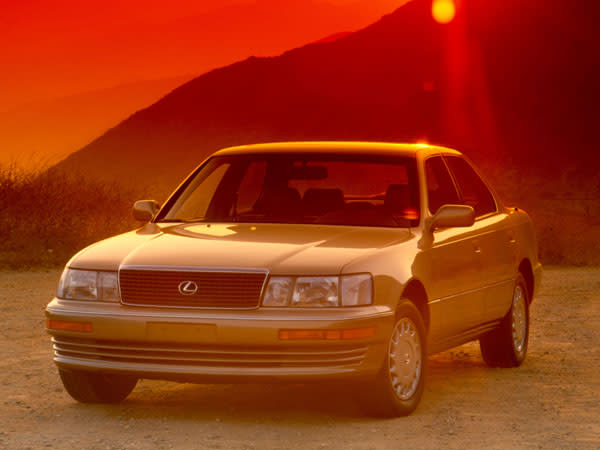
Lexus LS 400 (1990–1994)
The original LS 400 was a showcase of just how brilliant Toyota's engineers, designers, and marketers were in the 1980s. Mercedes-Benz and BMW had the lockdown on luxury sedans. But somehow Toyota was able to design a full-size, rear drive, V-8 luxury car that competed with Benz and BMW but was priced below them—in some cases by more than $10,000.
The LS was boxy, but then so was the Mercedes S-Class at that time, the LS 400's chief rival. Today the design appears unfussy and eternal. Its understatement is even more impressive considering how much thought and effort went into its launch, and the launch of the Lexus brand itself.
A testament to the Lexus' reliability: You still see original Lexus LS 400s on the road and many appear to be in very good condition.

 Yahoo Autos
Yahoo Autos 
